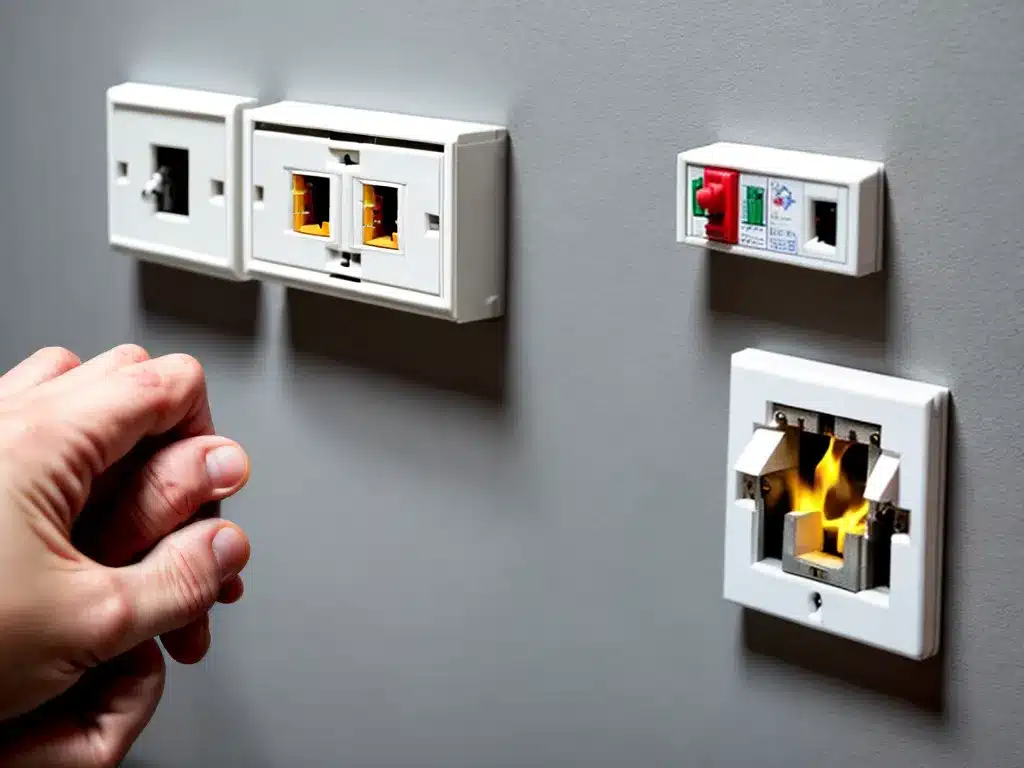
Reduce Electrical Fires By Installing Safer Sockets” />
How to Reduce Electrical Fires By Installing Safer Sockets
Electrical fires are a major cause of home damage and injury each year. Many of these fires originate from faulty electrical outlets and old, outdated wiring. By upgrading to safer, modern electrical outlets and sockets, you can greatly reduce the risk of electrical fires in your home.
Why Electrical Socket Fires Occur
Most home electrical fires start at receptacles and outlets. Some key reasons this happens include:
-
Faulty wiring – Outdated wiring can fray, deteriorate, and loosen over time. This creates heat and sparks which can ignite fires.
-
Loose connections – Loose plugs and outlets allow electricity to arc across gaps, generating extreme heat.
-
Overloaded circuits – Too many devices on one circuit pushes it past capacity, leading to overheated wires.
-
Damaged outlets – Cracked or broken sockets expose wires to oxygen, allowing them to overheat.
-
Faulty devices – Damaged or faulty devices like heaters and appliances can short out and spark fires.
-
Combustible buildup – Dust, lint and other debris around outlets can easily ignite.
How Modern Sockets Reduce Fire Risks
Newer electrical outlets and receptacles are designed with important safety features to prevent fires, including:
Arc Fault Circuit Interrupters (AFCIs)
- AFCIs detect dangerous electrical arcs and sparks, shutting off power to prevent ignition.
Tamper-Resistant Shutters
- Shutters prevent foreign objects from contacting live electrical contacts.
High-Quality Components
- Durable metals and plastics reduce overheating risks.
Tight Connections
- Advanced outlet and wire connectors stop electricity arcing across gaps.
Grounded Connections
- Grounding directs electricity safely away in a fault. Ungrounded outlets increase fire risks.
Overcurrent Protection
- Built-in fuses and breakers prevent overloads.
Replacing Outlets to Reduce Fire Risks
Here are some tips to reduce electrical fires in your home by installing safer, modern outlets and sockets:
Inspect All Outlets and Plugs
- Check for any loose, damaged, or overheating outlets and unplug devices promptly. Replace any deteriorated outlets right away.
Upgrade Outlets to AFCI and Tamper-Resistant
- Replace outdated outlets with new tamper-resistant AFCI outlets, especially near water sources and in kitchens, bedrooms and living spaces.
Use GFCI Outlets Where Needed
- Use ground-fault circuit interrupter (GFCI) outlets within 6 feet of water sources like sinks.
Replace Two-Prong Outlets
- Upgrade ungrounded two-prong outlets to grounded three-prong outlets for safety. Rewire with 12 or 14 gauge wiring.
Avoid Overloading Circuits
- Use power strips and only plug in compatible devices to each circuit. The average home circuit should not exceed 15 amps.
Keep Outlets Clear
- Ensure a 3-foot clearance around outlets with no clutter or combustible materials.
Test AFCIs and GFCIs Monthly
- Test all new protective outlets monthly by pressing their “test” buttons.
Conclusion
Updating your home’s electrical sockets, outlets and wiring to utilize modern safety features can significantly reduce your risk of electrical fires. Seek a qualified electrician’s help in inspecting and upgrading outlets, especially if your home is older. Proper use and monthly testing of protective devices like AFCIs, tamper-resistant receptacles and GFCIs saves both lives and property.
